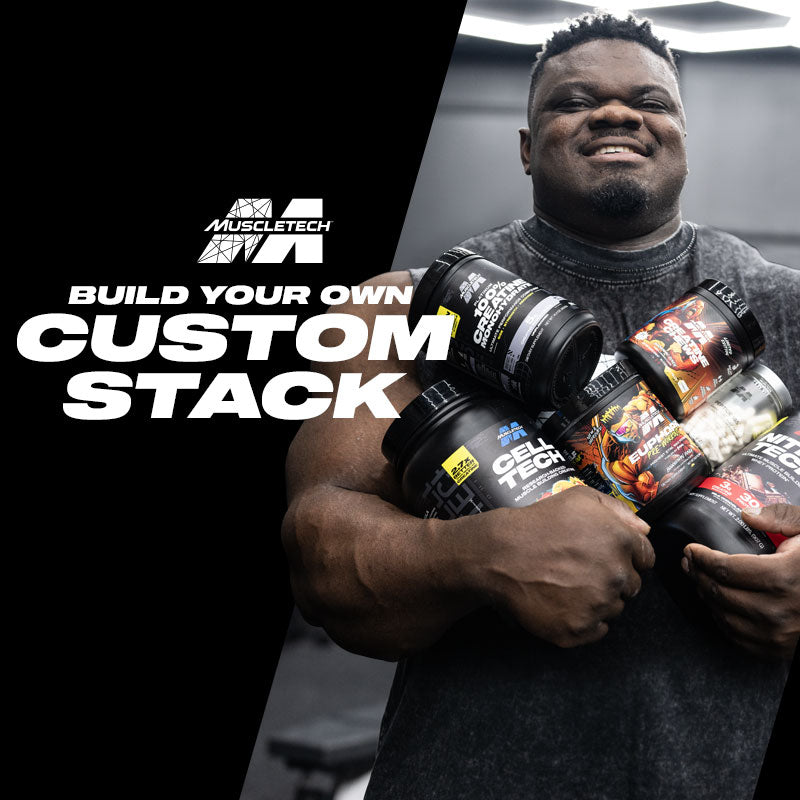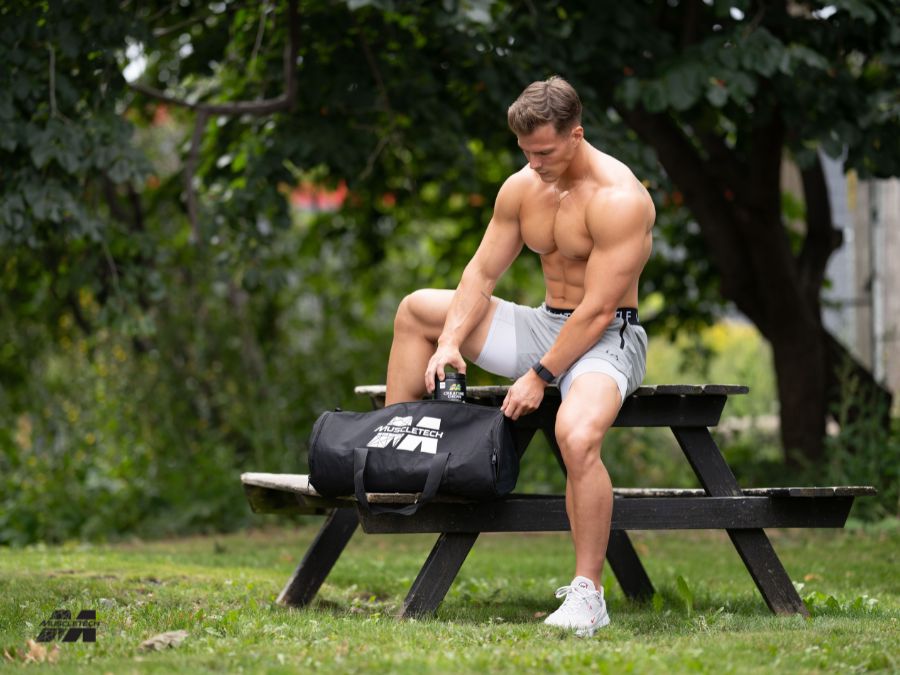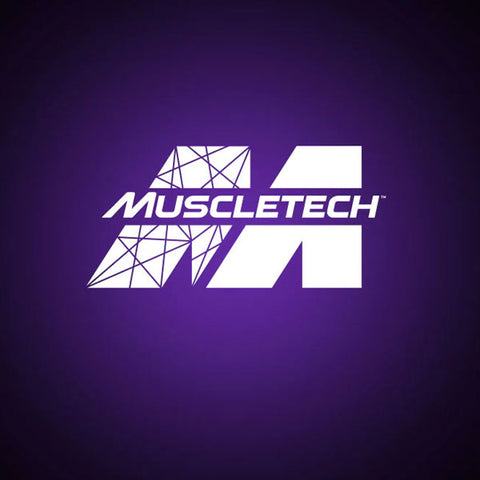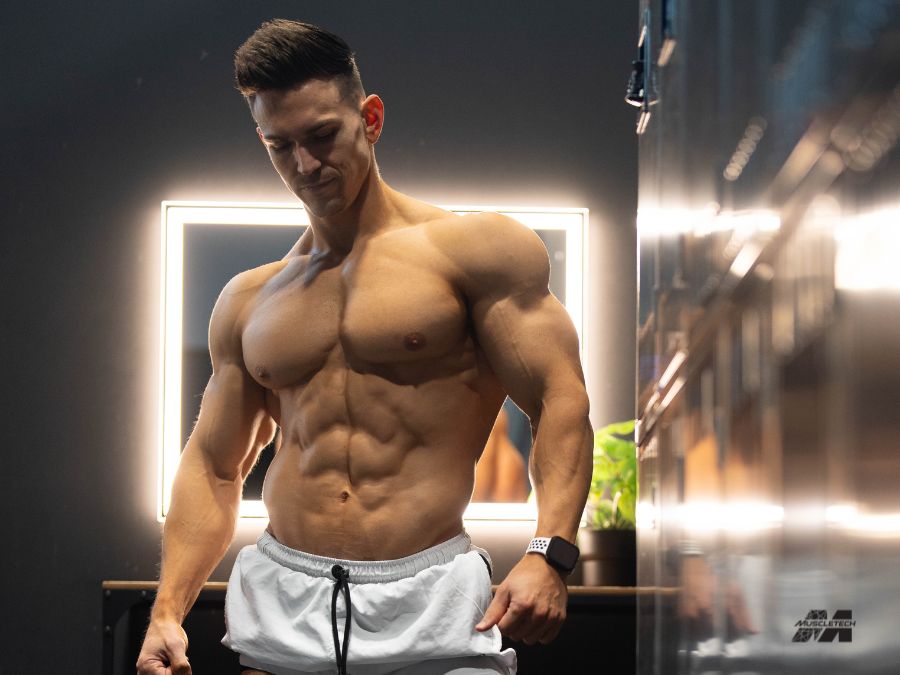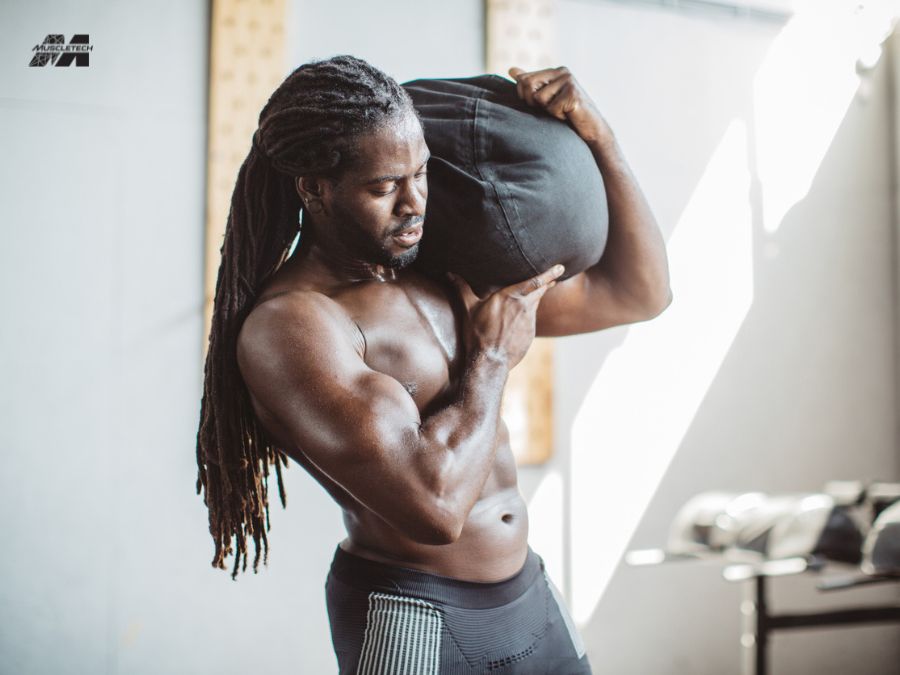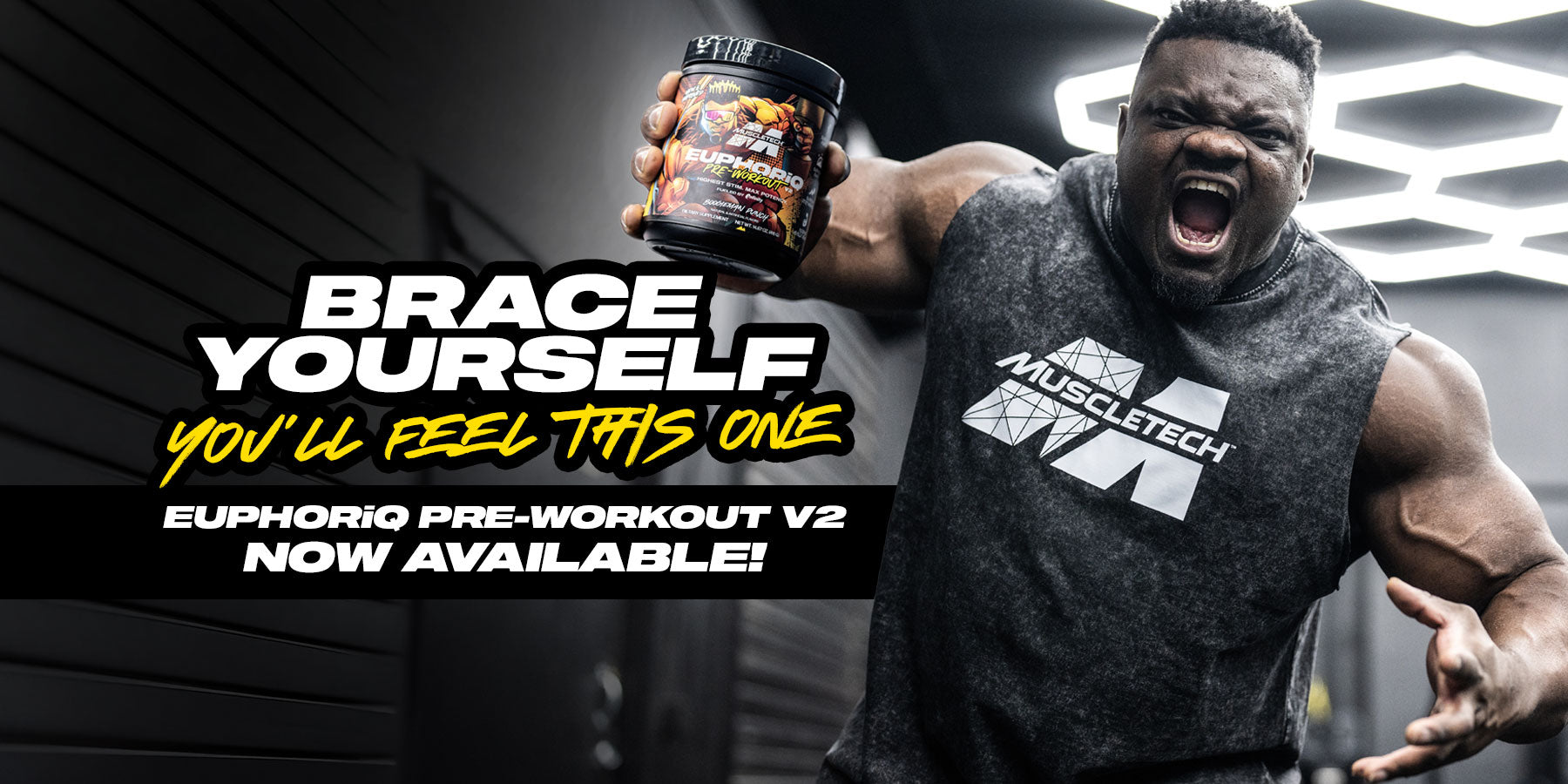The key to bodybuilding is optimizing your body composition by growing as much muscle mass as possible and reducing body fat as much as possible. But the problem is that losing body fat while preserving your hard-earned muscle gains is difficult to accomplish.
Too often, bodybuilders spend months and years growing impressive amounts of muscle tissue only to see it waste away the minute they decide to start a fat-loss phase. Fortunately, there is a way to shred body fat and maintain muscle mass, just as many of the top bodybuilders in the world do.
This article will discuss the factors you must consider in order to lose body fat and maintain the muscle mass you work so hard for.
Table of content
How To Lose Body Fat?
1. Create A Calorie Deficit
Fat loss can only occur when the body uses its fat stores as a source of energy. This happens when the body burns more calories than it consumes, creating a caloric deficit. (1)
This can happen with increased exercise volume; however, a caloric deficit will most often be created by consuming fewer calories than the body needs to maintain weight. (1)
A good target to shoot for to drive fat loss but avoid excessive muscle breakdown is a ~15% decrease in total calories.
2. Consider and Increase Your Metabolism
The first step to creating a caloric deficit to drive fat loss is to determine your basal metabolic rate (BMR). (1)Your BMR is the calories your body needs to maintain vital functions at rest but humans don’t just spend their days in bed lying still.
If you are reading this post, you are likely training regularly. So, the next stop would be to determine your total daily energy expenditure (TDEE). Your TDEE considers your BMR and the other movements you perform, such as exercise (EAT) and non-exercise activity (NEAT). (1) The higher you can get your TDEE, the more likely you are to drive fat loss.
3. Optimize Hormone Levels
Regulating your hormone levels, such as insulin, cortisol, leptin, and testosterone, can also impact your ability to lose fat. (2) Each of these hormones can play a role in fat storage and metabolism.
You can promote healthy hormone levels and optimize fat loss by managing stress, improving sleep, and eating well.
4. Fat Loss Promoting Macronutrients
Once a calorie deficit is created and you maintain a high activity level throughout your day, you can look to the actual foods you are eating. The three macronutrients include protein, carbohydrates, and fat, which will “cost” calories by simply digesting them.
This is called the thermic effect of food; protein has the highest effect of all the macronutrients. Keeping a diet high in protein can increase your metabolic rate via the calories required to metabolize it. As well as provide amino acids to sustain muscle mass. (1)
5. Put It All Together
If you can accomplish these four things, you will be on your way to kickstarting fat loss. Fat loss can be an intricate and inconsistent process.
Still, by focusing on sustaining a caloric deficit, maintaining a high activity level, optimizing your hormone levels, and consuming the right balance of macronutrients, you can see changes in your body fat percentage.
An excellent target for weight loss will be 1-2 pounds per week. Any faster than that, and you may begin to break down muscle tissue for energy, which is the last thing you want as a bodybuilder.
How To Preserve Muscle Mass in A Calorie Deficit?
1. Keep Protein Intake High
As mentioned above, protein is a powerful macronutrient that helps increase your TDEE and create a calorie deficit to create fat loss. But since losing fat is not the only goal of a bodybuilder, you’ll need to consider how you will support your hard-earned muscle mass to prevent muscle breakdown.
Protein provides essential amino acids to repair and grow muscle tissue, and by consuming high protein during a fat-loss phase, you can protect against muscle wasting. You can find high-quality protein in animal products such as lean meats, fish, eggs, dairy, and protein supplements. (3)
Plant-based foods such as beans and legumes or fortified plant-based protein supplements can be good non-animal protein sources. As a general rule of thumb, a daily protein intake of 1.4-2.4g per kg of body weight per day is advised to support lean muscle tissue. (3)
However, intakes up to 3.0 g/kg/day have been shown to assist in preserving muscle mass with no adverse health effects. (3)
2. Manipulate Carbohydrates & Fat
The other two macronutrients can play important roles in helping you preserve muscle mass during a fat-loss phase. Carbohydrates are the body’s primary energy source during high-intensity activities such as lifting weights. (4)
Maintaining the right amount of carbohydrates in your diet and in the muscle tissue as glycogen during a fat loss phase can help keep your performance high and your workouts effective. (4)
Too often, during a fat loss phase, bodybuilders unnecessarily drop carbohydrates too low when they drop their training intensity, causing a “deflation” of their muscle mass.
The final macronutrient, fat, is critical for maintaining hormone health and vital bodily functions as you sustain a calorie deficit. Fat intake is essential for testosterone production, the primary anabolic hormone.
If fat levels drop too low, testosterone production and, ultimately, muscle mass can be negatively affected. You can find healthy fat sources in nuts, seeds, avocados, and even some saturated fat, which is warranted to optimize hormone levels.
3. Time Meals Properly
There is no way around depriving the body of food during a fat-loss phase. However, timing meals can help keep you satiated and adequately fueled and maintain training quality. (4)
The first point to consider when preparing meals is protein feedings. To maximize protein synthesis, you’ll want to spread protein feedings over the day rather than all at once. With each protein feeding aim for roughly 20g - 40g of high-quality protein. (4)
Next is your pre-workout feeding window, during which you should consume a large portion of your daily carbohydrates to fuel your session. This meal should take place 1-3 hours before your workout to give your body time to digest. (4)
Lastly, you should consume protein and carbohydrates during your post-workout window to recover from your session. This will also help refuel your muscle tissues with glycogen to better prepare you for the following session. (4)
The key with post-workout fueling is to keep fat intake relatively lower so that the protein and carbohydrates can be rapidly absorbed into the bloodstream.
4. Choosing The Right Training
a. Resistance Training
If your goal is maintaining your muscle mass during a fat-loss phase, then resistance training is just as crucial as your diet. Although it is unlikely that you will build new muscle mass in a calorie deficit, a combination of strength training and hypertrophy training can help maintain your current muscle mass.
It also promotes fat loss through increased calorie burn and hormone production. It has been shown that resistance training can promote significant increases in human growth hormone, which is one of the most lipolytic or fat-burning hormones you have. (5,6)
b. Cardiovascular Training
Cardio training can be an intricate aspect for bodybuilders looking to decrease body fat while maintaining muscle mass. The two main types of cardio training to consider are slower-paced steady state cardio or higher-intensity intervals, where the duration is shorter but the bouts require a higher effort.
The research comparing these two types of training shows similar results regarding relative body fat losses; however, high-intensity interval training creates more significant total body fat losses. (7)
However, the caveat is that higher-intensity interval training may affect your ability to perform quality resistance training if you cannot recover from it, especially if you consume low amounts of carbohydrates.
This is where an individualized approach to your fat loss journey is vital. Try lower-intensity steady-state cardio or high-intensity interval training to see which works better for your program and goals.
The Importance of Sleep & Recovery
Optimizing your sleep is the final piece to preserving muscle mass while you burn fat. As you sleep, your body undergoes several processes to repair your muscle tissue and recover from training. (8)
Getting enough sleep also helps support healthy hormone levels, which can impact your ability to burn fat and preserve muscle mass. (8)
Aim for 7-9 hours of uninterrupted sleep per night to maximize fat loss and prevent muscle breakdown. To do this, sleep in a dark, cool room with as little noise as possible and minimize screen time before bed.
Wrapping Up On Losing Body Fat Without Losing Muscle Mass
As you can see, preserving muscle mass while losing fat as a bodybuilder can be challenging. But it certainly is possible, and the factors outlined above are the exact ones that some of the best bodybuilders in the world consider when they plan their fat loss strategy.
You work hard for your muscle mass and deserve to keep it through a fat-loss phase. So, use this article to guide your fitness & nutrition plan to get it done.
Plus, be sure to purchase a high-quality supplement like NitroTech to support your training and nutrition and ensure that no hard-earned gains are lost as you begin to shred body fat!
Supplement Options For Preserving Muscle In A Fat Loss Phase
It can be easier said than done to consider and incorporate all the factors that go into losing fat and preserving as much muscle mass as possible. Not only are there several factors to consider, but you may also have a busy schedule and other responsibilities throughout your day to attend to.
Too often, bodybuilders struggle with getting the nutrition they need and miss out on achieving their body composition goals because of inadequate nutrition.
This is where a supplement strategy can help augment your fitness efforts. One supplement perfect for providing the necessary nutrition you need as a bodybuilder is Mass-Tech Lean Mass Gainer by Muscle-Tech.
Mass-Tech provides everything you need to support your muscle mass as you sustain a calorie deficit. Each serving gives you 50g of high-quality protein, 5 grams of creatine, and 280g of carbohydrates.
This combination will help you reach your protein requirements to sustain your muscle mass with plenty of amino acids. It also supports recovery and training intensity with creatine monohydrate and ample carbohydrates.
If you need a high-quality supplement to help you sustain muscle mass while cutting fat, look no further than Mass-Tech.
References:
- Aragon, A. A., Schoenfeld, B. J., Wildman, R., Kleiner, S., VanDusseldorp, T., Taylor, L., Earnest, C. P., Arciero, P. J., Wilborn, C., Kalman, D. S., Stout, J. R., Willoughby, D. S., Campbell, B., Arent, S. M., Bannock, L., Smith-Ryan, A. E., & Antonio, J. (2017). International society of sports nutrition position stand: diets and body composition. Journal of the International Society of Sports Nutrition, 14, 16. https://doi.org/10.1186/s12970-017-0174-y
- Trexler, E. T., Smith-Ryan, A. E., & Norton, L. E. (2014). Metabolic adaptation to weight loss: implications for the athlete. Journal of the International Society of Sports Nutrition, 11(1), 7. https://doi.org/10.1186/1550-2783-11-7
- Jäger, R., Kerksick, C. M., Campbell, B. I., Cribb, P. J., Wells, S. D., Skwiat, T. M., Purpura, M., Ziegenfuss, T. N., Ferrando, A. A., Arent, S. M., Smith-Ryan, A. E., Stout, J. R., Arciero, P. J., Ormsbee, M. J., Taylor, L. W., Wilborn, C. D., Kalman, D. S., Kreider, R. B., Willoughby, D. S., Hoffman, J. R., … Antonio, J. (2017). International Society of Sports Nutrition Position Stand: protein and exercise. Journal of the International Society of Sports Nutrition, 14, 20. https://doi.org/10.1186/s12970-017-0177-8
- Kerksick, C., Harvey, T., Stout, J., Campbell, B., Wilborn, C., Kreider, R., Kalman, D., Ziegenfuss, T., Lopez, H., Landis, J., Ivy, J. L., & Antonio, J. (2008). International Society of Sports Nutrition position stand: nutrient timing. Journal of the International Society of Sports Nutrition, 5, 17. https://doi.org/10.1186/1550-2783-5-17
- Craig, B. W., Brown, R., & Everhart, J. (1989). Effects of progressive resistance training on growth hormone and testosterone levels in young and elderly subjects. Mechanisms of ageing and development, 49(2), 159–169. https://doi.org/10.1016/0047-6374(89)90099-7
- Carrel, A. L., & Allen, D. B. (2000). Effects of growth hormone on adipose tissue. Journal of pediatric endocrinology & metabolism : JPEM, 13 Suppl 2, 1003–1009.
- Viana, R. B., Naves, J. P. A., Coswig, V. S., de Lira, C. A. B., Steele, J., Fisher, J. P., & Gentil, P. (2019). Is interval training the magic bullet for fat loss? A systematic review and meta-analysis comparing moderate-intensity continuous training with high-intensity interval training (HIIT). British journal of sports medicine, 53(10), 655–664. https://doi.org/10.1136/bjsports-2018-099928
- Liu, P. Y., & Reddy, R. T. (2022). Sleep, testosterone and cortisol balance, and ageing men. Reviews in endocrine & metabolic disorders, 23(6), 1323–1339. https://doi.org/10.1007/s11154-022-09755-4
